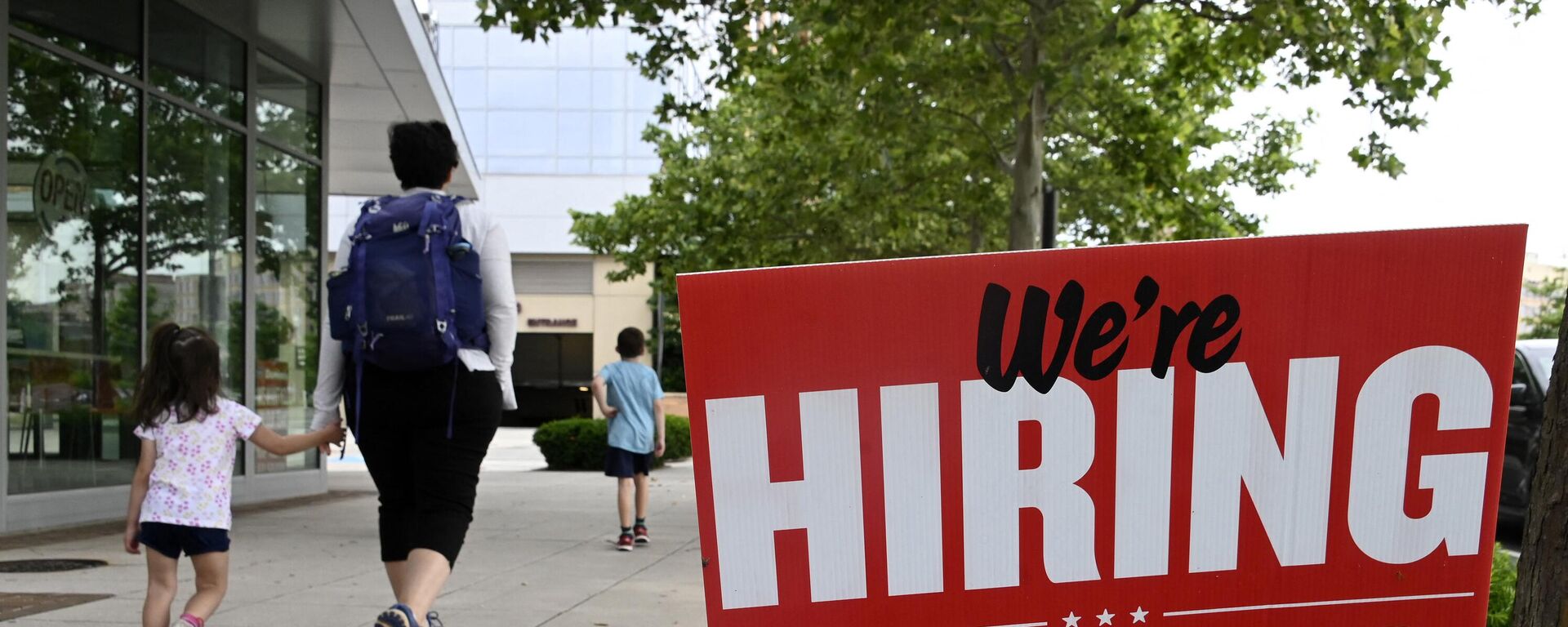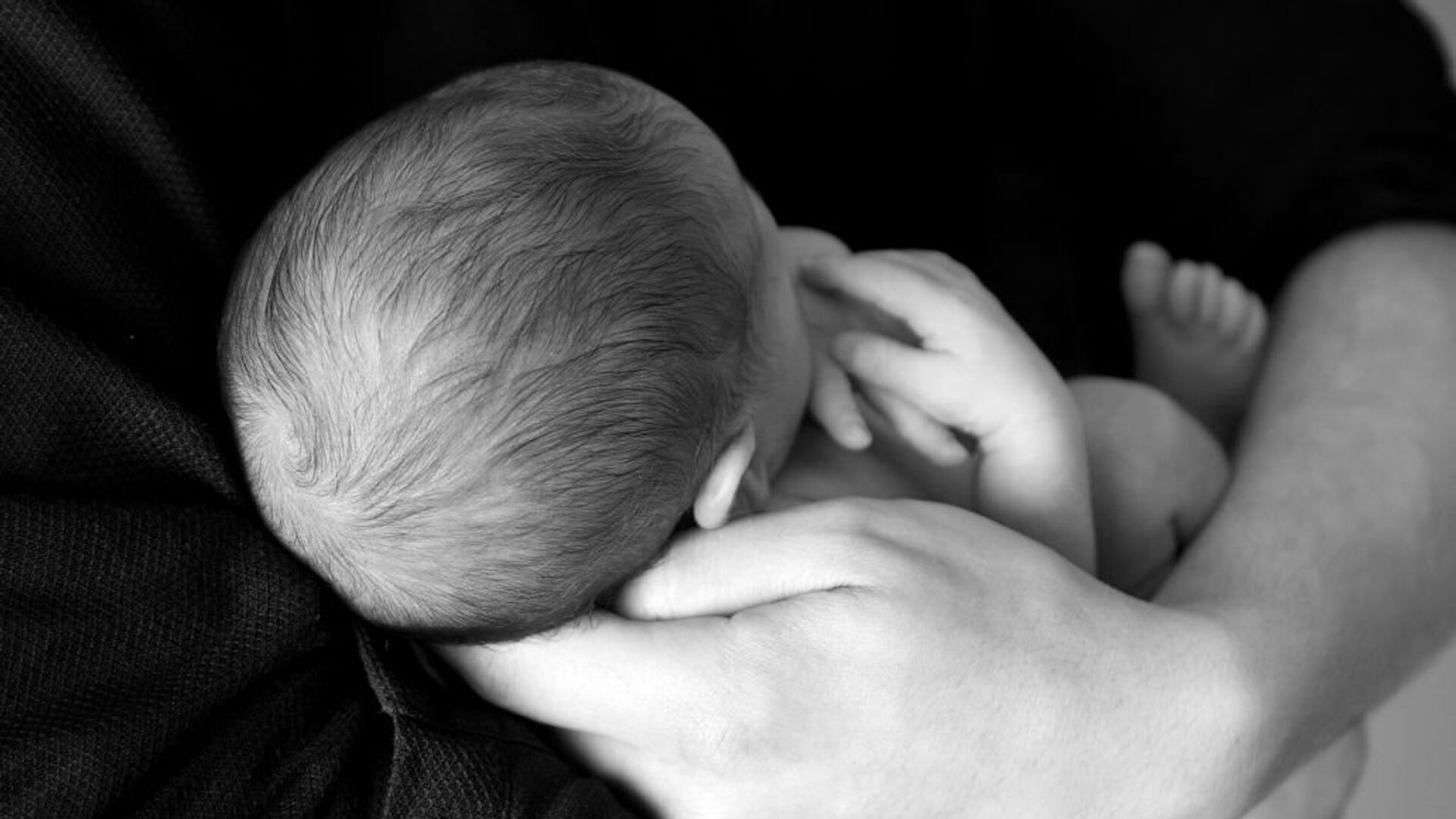https://sputnikglobe.com/20231230/2020s-could-be-slowest-population-growth-for-us-since-the-great-depression-1115903039.html
2020s Could Be Slowest Population Growth for US Since the Great Depression
2020s Could Be Slowest Population Growth for US Since the Great Depression
Sputnik International
According to William Frey, a professional demographer at Brookings, the 2020s will be the slowest-growing decade in the history of the US.
2023-12-30T23:45+0000
2023-12-30T23:45+0000
2023-12-30T23:45+0000
americas
population
population decline
us
us census bureau
demographics
demography
demographic change
demographic crisis
https://cdn1.img.sputnikglobe.com/img/107045/10/1070451078_0:123:1031:703_1920x0_80_0_0_cb9acc765ab2a2da2850afef32bd8953.jpg
According to William Frey, a professional demographer at Brookings, the 2020s will be the slowest-growing decade in the history of the US. This coming decade’s population scale-back could beat the previous record which was set in the 1930s, following the Great Depression.Between 2020 and 2030, the growth rate for the US can be expected to reach less than 4% over that 10-year-period, said Frey.For this past year, the growth rate in the US was 0.53%, which is about half the worldwide figure. By New Year’s Day the US population will stand at 335.8 million. Comparatively, the world’s population by New Year’s Day will reach just over 8 billion, which is up from 7.9 billion a year ago. Therefore, the world’s growth rate for the year is 0.95%, according to the US Census Bureau.They add that in January of 2024, the US will experience one birth every 9.0 seconds, and one death every 9.5 seconds. And net international migration will add one person to the US population every 28.3 seconds. So in total, the US can expect to grow its population by one person every 24.2 seconds.Worldwide, 4.3 births and 2.0 deaths will be expected every second in January of 2024, the bureau added.In the 1930s, following the severity of the Great Depression—which was the worst economic downturn in the history of the industrialized world—population decline in states affected by the Dust Bowl reached 25% or more. For the entire country, population only grew by 7.3% between 1930 and 1940, which became the lowest rate of increase of any decade before or since.Both reduced fertility levels and reduced immigration during this period contributed to the significant downturn.Reasons for the low fertility rates in the US include various factors that aren’t just tied to the country’s poor economic state and lack of childcare assistance.According to a Harris Poll from fall of last year, adults who do not have children and do not wish to do so are concerned about: personal independence (54%), personal financial situation (46%), work/life balance (405), housing prices (33%), safety (31%), US politics (31%), and climate change (28%).
https://sputnikglobe.com/20231107/inflation-gnawing-at-american-401k-savings-expert-says-1114778775.html
https://sputnikglobe.com/20231007/growing-job-market-to-make-americans-feel-worse--1113997745.html
americas
Sputnik International
feedback@sputniknews.com
+74956456601
MIA „Rossiya Segodnya“
2023
News
en_EN
Sputnik International
feedback@sputniknews.com
+74956456601
MIA „Rossiya Segodnya“
Sputnik International
feedback@sputniknews.com
+74956456601
MIA „Rossiya Segodnya“
population growth, population decline, birth rate, american population ,american birth rate, no more americans, us dies out, fewer americans, lgbtq kills us birth rate, lgbt kills us birth rate, lgbtq kills birth rate, lgbt kills us birth rate, lgbtq kills us, lgbtq kills us, demographics, us population, statistics, inflation in us, economic downturn, americans dont have money, surging inflation, debts, loans, credit cards, us economy, economic uncertainty
population growth, population decline, birth rate, american population ,american birth rate, no more americans, us dies out, fewer americans, lgbtq kills us birth rate, lgbt kills us birth rate, lgbtq kills birth rate, lgbt kills us birth rate, lgbtq kills us, lgbtq kills us, demographics, us population, statistics, inflation in us, economic downturn, americans dont have money, surging inflation, debts, loans, credit cards, us economy, economic uncertainty
2020s Could Be Slowest Population Growth for US Since the Great Depression
If this current growth pace continues through the end of the decade for the US, the 2020s could become the slowest-growing decade in US history.
According to
William Frey, a professional demographer at Brookings, the 2020s will be the slowest-growing decade in the history of the US. This coming decade’s population scale-back could beat the previous record which was set in the 1930s, following the Great Depression.
Between 2020 and 2030, the growth rate for the US can be expected to reach less than 4% over that 10-year-period, said Frey.
For this past year, the growth rate in the US was 0.53%, which is about half the worldwide figure. By New Year’s Day the US population will stand at 335.8 million. Comparatively, the world’s population by New Year’s Day will reach just over 8 billion, which is up from 7.9 billion a year ago. Therefore, the world’s growth rate for the year is 0.95%, according to the
US Census Bureau.
They add that in January of 2024, the US will experience one birth every 9.0 seconds, and one death every 9.5 seconds. And net international migration will add one person to the US population every 28.3 seconds. So in total, the US can expect to grow its population by one person every 24.2 seconds. Worldwide, 4.3 births and 2.0 deaths will be expected every second in January of 2024, the bureau added.

7 November 2023, 12:26 GMT
In the
1930s, following the severity of the Great Depression—which was the worst economic downturn in the history of the industrialized world—population decline in states affected by the Dust Bowl reached 25% or more. For the entire country, population only grew by 7.3% between 1930 and 1940, which became the lowest rate of increase of any decade before or since.
Both reduced fertility levels and reduced immigration during this period contributed to the significant downturn.
Reasons for the low fertility rates in the US include various factors that aren’t just tied to the country’s poor economic state and lack of childcare
assistance.
According to a Harris Poll from fall of last year, adults who do not have children and do not wish to do so are concerned about: personal independence (54%), personal financial situation (46%), work/life balance (405), housing prices (33%), safety (31%), US politics (31%), and climate change (28%). 
7 October 2023, 06:57 GMT




